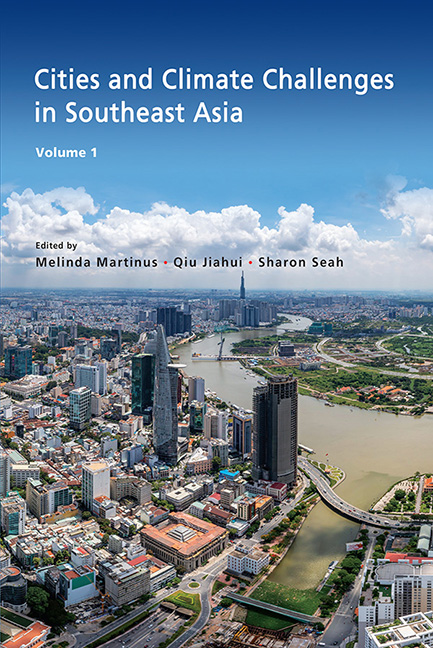6 - Building Climate-Resilient Communities: A Cursory Review of Selected Local Climate Action Plans in the Philippines
Published online by Cambridge University Press: 09 January 2024
Summary
Summary:
■ The Philippines Climate Change Act 2009 mandates local government units (LGUs) to plan and prepare for climate change by developing a local climate change action plan (LCCAP).
■ This study examines the planned climate change adaptation (CCA) and mitigation (CCM) activities of selected cities in the Philippines as reflected in their LCCAPs.
■ The study has shown that the LCCAPs of selected cities have substantially addressed the priority areas identified in the national climate change adaptation plan (NCCAP).
■ There is a clear commonality among the policy areas to address water sufficiency and knowledge and capacity development to combat climate change. On the other hand, actions related to ensuring sustainable energy were the least consistent among the reviewed local governments.
INTRODUCTION
Climate change has significant impacts on urban life. Rising global temperatures cause sea levels to rise, increase the number of extreme weather events such as floods, droughts and storms, and increase the spread of tropical diseases. In the 2014 Intergovernmental Panel on Climate Change (IPCC) report, expansion of urban areas was estimated to be on average twice as fast as the growth of the urban population. Consequently, the expected increase in urban land cover during the first three decades of the twenty-first century will be greater than the cumulative urban expansion in history with more than half of the global population residing in urban areas, compared to only 13 per cent in 1900 (Arias et al. 2021; Seto et al. 2014).
This anticipated growth in urban population and development entails exponential growth of urban infrastructure, which directly stimulates the increase of emissions across multiple sectors. As noted above, the average per capita CO2 emissions embodied in the infrastructure of industrialized countries is five times larger than those in developing countries.
The Philippine’s archipelagic nature and geographic location have made its cities highly vulnerable to the adverse impacts of climate change, natural hazards, and environmental degradation. Metro Manila, the national capital region, is at high risk from extreme weather events such as typhoons and floods, as it has exposure and vulnerability. Metro Davao, the largest urban agglomeration in the island of Mindanao, as well as the cities of Cebu, Tacloban, and Iloilo in the Visayas, are likewise exposed to climate change impacts (HUDCC 2016).
- Type
- Chapter
- Information
- Cities and Climate Challenges in Southeast Asia , pp. 73 - 91Publisher: ISEAS–Yusof Ishak InstitutePrint publication year: 2023

